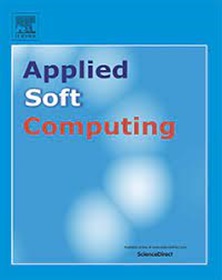基于局部多头自注意的长期记忆稀疏访问神经图灵机
IF 7.2
1区 计算机科学
Q1 COMPUTER SCIENCE, ARTIFICIAL INTELLIGENCE
引用次数: 0
摘要
在本文中,我们提出了一个稀疏访问神经图灵机(SANTM)来解决序列学习中的长期记忆挑战。SANTM集成了一个具有外部记忆的三级神经控制器:(1)底层用于将输入分割为可变长度块,(2)中间层用于短期记忆整合,(3)顶层通过基于ChebNet谱图卷积的位置偏置多头自注意机制选择性地访问外部记忆。通过l0约束优化方案训练的稀疏掩码,在允许预取的同时降低了内存访问速率。理论分析得出了理想条件下的最优接通率。在顺序图像分类(MNIST, CIFAR10)、文本分类、说话人识别和语言建模(WikiText-103, enwik8)上的实验表明,SANTM优于最先进的顺序模型。关键结果包括排列MNIST的准确率为95.7%(与NTM的94.0%相比),TC-Speech的准确率为85.4%(与NTM的79.6%相比),WikiText-103的困惑度为24.2(与Transformer-XL的27.0相比)。与传统的ntm相比,稀疏掩模减少了37%-54%的FLOPs,验证了其效率。本文章由计算机程序翻译,如有差异,请以英文原文为准。
SANTM: A Sparse Access Neural Turing Machine with local multi-head self-attention for long-term memorization
In this paper, we propose a Sparse Access Neural Turing Machine (SANTM) to address long-term memorization challenges in sequence learning. The SANTM integrates a three-level neural controller with external memory: (1) a bottom layer for segmenting inputs into variable-length chunks, (2) a middle layer for short-term memory integration, and (3) a top layer that selectively accesses external memory via a locality-biased multi-head self-attention mechanism based on ChebNet spectral graph convolution. A sparse mask, trained through an -constrained optimization scheme, reduces memory access rates while enabling pre-fetching. Theoretical analysis derives an optimal access rate under idealized conditions. Experiments on sequential image classification (MNIST, CIFAR10), text classification, speaker discrimination, and language modeling (WikiText-103, enwik8) demonstrate SANTM’s superiority over state-of-the-art sequential models. Key results include 95.7% accuracy on permuted MNIST (vs. NTM’s 94.0%), 85.4% on TC-Speech (vs. 79.6% for NTM), and 24.2 perplexity on WikiText-103 (vs. Transformer-XL’s 27.0). The sparse mask reduces FLOPs by 37%–54% compared to traditional NTMs, validating its efficiency.
求助全文
通过发布文献求助,成功后即可免费获取论文全文。
去求助
来源期刊

Applied Soft Computing
工程技术-计算机:跨学科应用
CiteScore
15.80
自引率
6.90%
发文量
874
审稿时长
10.9 months
期刊介绍:
Applied Soft Computing is an international journal promoting an integrated view of soft computing to solve real life problems.The focus is to publish the highest quality research in application and convergence of the areas of Fuzzy Logic, Neural Networks, Evolutionary Computing, Rough Sets and other similar techniques to address real world complexities.
Applied Soft Computing is a rolling publication: articles are published as soon as the editor-in-chief has accepted them. Therefore, the web site will continuously be updated with new articles and the publication time will be short.
 求助内容:
求助内容: 应助结果提醒方式:
应助结果提醒方式:


